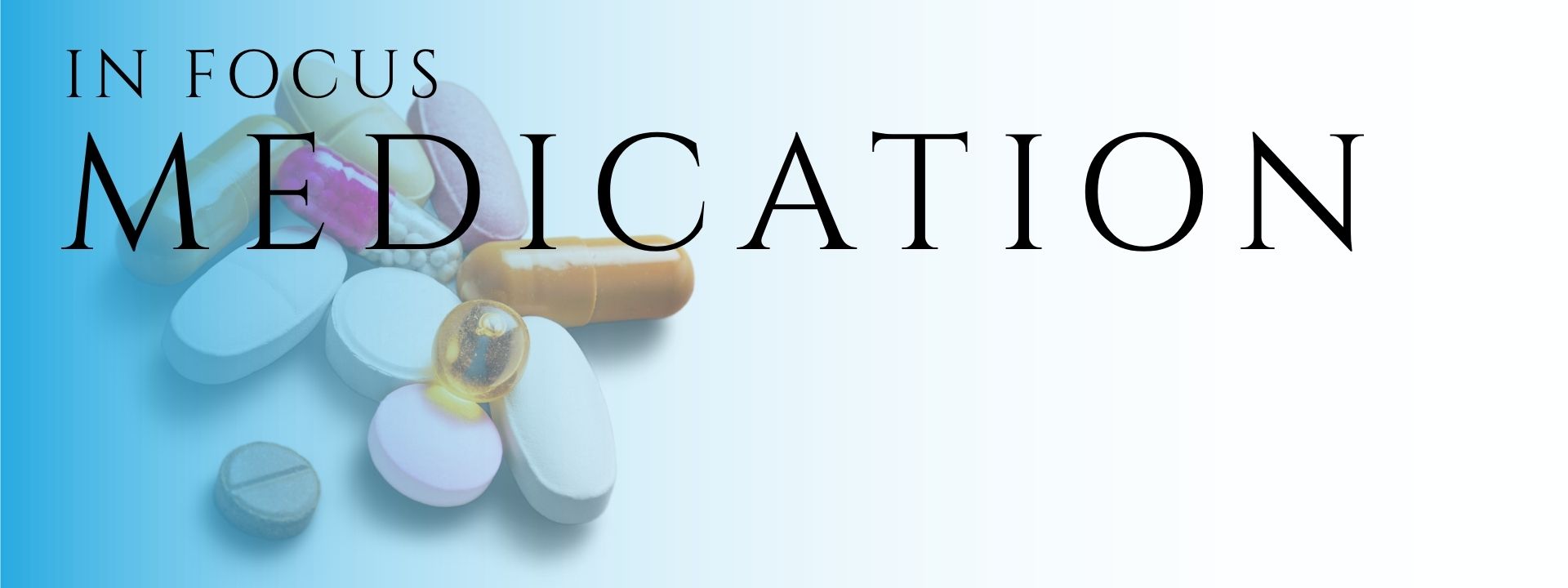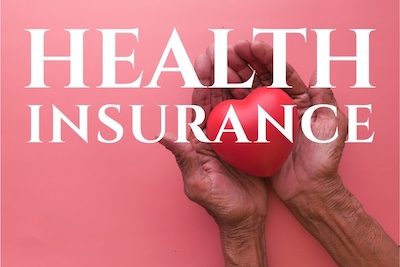
Medication in the Philippines: A Practical Guide for Expats
On a personal level, I’ve lived with asthma for many years and rely on preventive medications like Clenil Modulite and Ventolin to stay healthy. I left home with a forward supply and didn’t think much about it until my stock began to run low. I visited a local doctor for a check-up and to get a new prescription — only to be told those particular brands weren’t available.
I was offered alternatives and given a prescription. After visiting several pharmacies without success, I returned to the doctor to share my concerns. He wasn’t surprised — shortages are common here, he said, and even his own children with asthma face the same challenges.
Getting the right medication in the Philippines isn’t always straightforward. Whether you're managing a chronic condition or dealing with something unexpected, it helps to know what to bring, how prescriptions work, and where the real gaps are. This guide covers brand availability, pharmacy stock issues, and how hospital prescriptions are typically handled in the Philippines.
Philippines Health Insurance Options
Understand the different health insurance choices in the Philippines — from pay-as-you-go care and government-run PhilHealth to comprehensive private plans. We looks at costs and how to decide which option works best for your needs.

Understand how PhilHealth works for expats — who can join, what it covers, and how to enroll.

Compare private, public, and international insurance options to protect your health in the Philippines.

Understanding the Medication Supply System in the Philippines
Before planning your medication needs as an expat in the Philippines, it’s important to understand how the country’s pharmaceutical system works. Not all medications are readily available — and even those that are may differ in brand name, formulation, or packaging compared to what you’re used to at home.
Medication availability is shaped by FDA regulation, import processes, and logistical challenges such as transport delays, limited cold storage, and uneven regional distribution. Affordability also plays a role: medicines priced beyond the reach of most consumers create low demand, which in turn affects what pharmacies stock and what pharmaceutical companies register for local sale.
The Philippines relies heavily on imported medicines, especially branded and specialised drugs, making the supply chain vulnerable to delays and shortages. While many generics are produced locally by companies such as Unilab and PascualLab, most still depend on imported raw ingredients.
As a result, even essential treatments that are routine in many home countries can sometimes be difficult to find — particularly outside major cities.
For expats, this means that access to certain medications in the Philippines is not always guaranteed, especially for specific brands or long-term treatments. Understanding the system is the first step; the next is to plan ahead — know what you’ll need, check availability in advance, and bring an initial supply when you move.

Medication Planning Before You Move
Planning ahead can save you stress, money, and potential health risks. If you take regular medication — especially for a chronic condition — don’t assume it will be available in the Philippines under the same name or formulation. Before you move, research your options, speak to your healthcare provider, and gather what you’ll need to keep your treatment plan on track from the moment you arrive.
To help you avoid delays or shortages, here’s a practical checklist you can work through before you relocate. It covers everything from consulting your doctor to confirming what’s permitted through customs, so you can prepare with confidence.
Pre-Move Medical Checklist
| ✔️ Task | Details |
|---|---|
| Visit your doctor | Book an appointment to review your medications, confirm dosages, and request a signed medical summary to take with you. |
| Bring a 3-month supply | Carry enough medication to cover delays, registration issues, or local shortages after arrival. Keep everything in original packaging. |
| Get written prescriptions | Ask for printed prescriptions listing both brand and generic names. This helps with customs and ensures local pharmacists can find the closest equivalent. |
| Check brand equivalents | Look up the generic names and local brand names for your medications in advance. This can make it easier for pharmacists to match your prescription if your usual brand is unavailable. |
| Research local availability | Check with major chains like Mercury Drug and Watsons, or join expat forums, to confirm whether your medication is sold locally. |
| Review insurance coverage | Confirm if your policy covers prescriptions overseas and whether claims require pre-approval or can be reimbursed later. |
| Understand out-of-pocket costs | Even with insurance, you may need to pay upfront. Generic alternatives are often cheaper, while imported brands can be costly. |
| Check medication stability for travel | Ensure your medication won’t degrade in heat, humidity, or prolonged storage. Use insulated pouches if needed. |
| Check customs rules | Some medications are controlled in the Philippines. Research restrictions and carry a doctor’s letter for anything sensitive. |
| Keep meds in carry-on | Never place essential medication in checked luggage. Keep it in your carry-on, clearly labelled, in case of delays or baggage loss. |
| Bring medical devices | Include essential items like glucose meters, blood pressure monitors, or inhalers — these may not be easy to source locally. |

Managing Your Medication After You Arrive in the Philippines
Once you’ve arrived in the Philippines, there are a few key steps to take to ensure your treatment continues without disruption. Local availability, pharmacy practices, and doctor consultations can work differently from what you’re used to, so it’s best to get organised early.
Here’s what to prioritise in your first few weeks to stay on top of your medication needs.
| ✔️ Task | Details |
|---|---|
| Consult a local doctor | Arrange an appointment soon after arrival. Bring your prescriptions and medical history, and discuss how to manage ongoing treatment, renew prescriptions locally, and identify safe alternatives or generic equivalents if your usual brand isn’t available. |
| Locate a reliable pharmacy | Identify a well-stocked pharmacy near your home — ideally a major chain such as Mercury Drug or Watsons. Check if your medication or its generic version is available, and ask whether it’s regularly kept in stock. |
| Set up emergency contacts | Save contact numbers for your doctor, the nearest hospital, and emergency services (dial 911 in the Philippines). Keep a list of your current medications on hand, in print or on your phone, so medical staff can access it quickly in an emergency. |

Medication Access During Emergencies in the Philippines
When you face an unexpected illness or accident in the Philippines, getting the right medication quickly is critical — but it’s not always straightforward.
In many government hospitals, you’ll receive a prescription rather than the medication itself, meaning you or a family member must locate and purchase it from an outside pharmacy. In rural areas, stock shortages and transport delays can make this even more difficult.
For expats, it’s essential to understand how emergency care works, what to do if medication is out of stock, and how to be prepared before a crisis happens.
How Emergency Medication Differs in Public vs Private Hospitals
Access to emergency medication varies depending on the hospital type. Private hospitals typically provide treatment and medication on-site, while government facilities often require patients to source drugs themselves. This difference can be a surprise for expats during an emergency.
The table below outlines the key differences so you can plan ahead.
| Aspect | Private Hospitals | Government Hospitals |
|---|---|---|
| Emergency Medication Availability | Usually available on-site and administered immediately as part of treatment. | Often not provided directly; a prescription is issued, and you must purchase the medication yourself. |
| Pharmacy Access | In-house pharmacies stocked with common medications are the norm. | No in-house pharmacies; you must go to an external pharmacy, sometimes offsite. |
| Who Buys the Medication | Hospital staff or caregivers may assist, with costs added to your bill. | You or a relative must leave to buy the medication, often urgently. |
| Drug Availability Issues | Imported and branded medications are more likely to be available. | Generics are more common, but availability can be inconsistent, especially in rural areas. |
| Costs | Higher, but offers faster and more convenient access to required drugs. | Lower overall, but sourcing requirements and delays can affect treatment speed. |

Final Thoughts: Plan Around Your Health, Not Just Your Lifestyle
Every expat’s situation is different. Some move to the Philippines in good health and simply want peace of mind in case something goes wrong. Others arrive with chronic conditions that require ongoing medication or regular treatment. Whatever your situation, the key is to plan ahead — before you arrive, not after.
Understanding the limits of the local pharmaceutical system is essential. Not all medications are available, and not every hospital carries the drugs you may need. Healthcare access can vary widely depending on where you live — major cities like Manila and Cebu generally have better-stocked pharmacies, specialist doctors, and modern hospitals, while many provincial areas face shortages, slower access to treatment, and fewer medical facilities. That’s why healthcare availability should be a deciding factor when choosing your location, especially if you rely on specific medications or require fast emergency care.
Healthcare in the Philippines places more responsibility on you as the patient. Know what’s available locally, choose your location with medical access in mind, and prepare for gaps in the system.

Medication in the Philippines – Frequently Asked Questions
Can I bring my own prescription medication to the Philippines?
Yes, you can bring prescription medication for personal use, but it’s best to carry it in its original packaging along with a doctor’s prescription. Some controlled substances may require additional documentation. Always check the latest Bureau of Customs guidelines before travelling.
Are the same medication brands available in the Philippines as in my home country?
Not always. Many international brands are unavailable or sold under different names. It’s important to know the generic name of your medication so local pharmacists can suggest an equivalent if your usual brand isn’t in stock.
How reliable is the medication supply in the Philippines?
Supply can be inconsistent, especially outside major cities. Delays in importation, transport issues, and limited local manufacturing capacity can lead to shortages, even for common prescriptions. Planning a backup supply is recommended.
Where can I buy prescription medication in the Philippines?
Most prescription medications are sold in pharmacies, with major chains such as Mercury Drug and Watsons having the widest selection. Some private hospitals also have in-house pharmacies, while government hospitals usually require you to purchase drugs externally.
Do I need health insurance to buy medication in the Philippines?
No, you can buy medication without health insurance, but having coverage can reduce costs, particularly for ongoing prescriptions or hospital-based treatments. Check whether your policy covers prescriptions and if claims require pre-approval.

Get to Know More About the Philippines
If you’re considering the Philippines for a long stay or as your retirement destination, explore our pages to get a fuller picture of life here. We share insights into Filipino society, and if diving has ever interested you, this is one of the best places in the world to experience it.

Everything you need to build a life in the Philippines.

Built on personal experience, this hub covers key dive sites, seasonal insights, filming tips, and trusted local knowledge.

Explore what shapes life in the Philippines — from culture and history to family, faith, and the systems that guide daily living.
